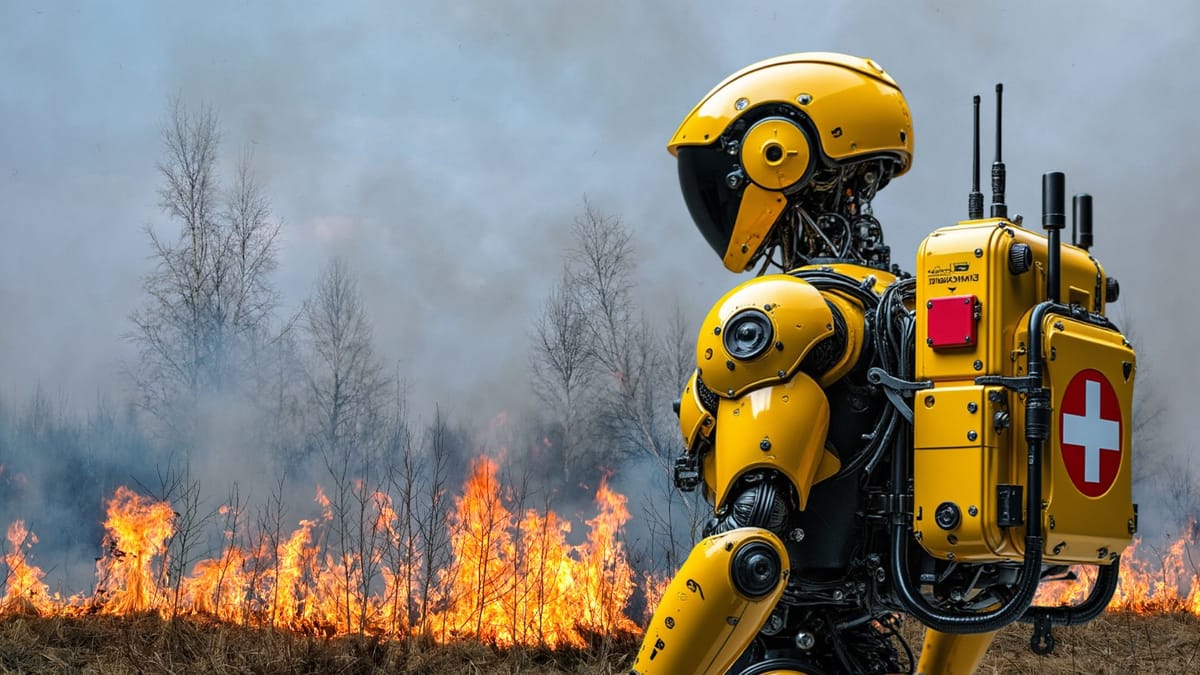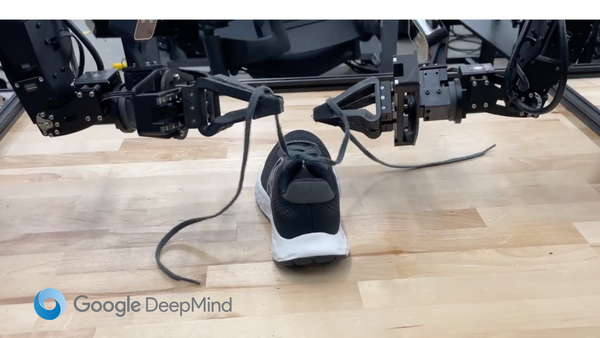Market Analysis: Wildland Firefighting Humanoid Robots
Market analysis of using humanoid robots as wildland firefighters. Understand the market opportunities, technological challenges, and societal impacts.

A Visionary Overview of Wildland Firefighting Humanoid Robots
Imagine a future where the relentless threat of wildfires is met with precision, resilience, and unwavering vigilance—not solely by the bravery of human firefighters but by an advanced cadre of humanoid robots.
Standing tall amid the smoke and flames, these robots bring a new level of capability to the battle against one of nature’s most destructive forces. This is a future where technology and humanity unite, transforming how we protect our forests, communities, and natural landscapes.
Why Humanoid Robots Could Be a Good Solution for Wildland Firefighting
Wildfires are among the most unpredictable and destructive natural disasters. Rugged terrain, extreme weather conditions, and the rapid spread of flames often make them worse. The dangers and challenges of wildland firefighting present an opportunity for technological intervention using humanoid robots.
Human firefighters face considerable risks when battling these blazes, including exposure to intense heat, smoke inhalation, and physical exhaustion.
According to the CDC, from 2000 to 2019, over 400 wildland firefighter fatalities occurred in the United States, primarily due to hazards such as burnovers, entrapments, heat-related illnesses, smoke inhalation, vehicle-related injuries, and sudden cardiac events due to intense physical exertion (CDC).
These figures reflect the high-risk nature of this work, but they don't account for the thousands of injuries and long-term health impacts firefighters suffer.
Each year, the United States experiences an average of over 60,000 wildfires, which burn millions of acres of land. In 2022 alone, 68,988 wildfires burned more than 7.5 million acres. The economic impact is staggering—between 2017 and 2021, wildfires caused an estimated $81.6 billion in damages, a tenfold increase from the previous five years (CISA).
These costs include the destruction of homes, businesses, and critical infrastructure, and they contribute to a broader economic impact estimated to range from $394 billion to $893 billion annually.

Wildfire detection relies heavily on satellite imaging, aerial surveillance, and limited ground patrols. While these methods are effective to some extent, they have limitations. Satellite data may not always provide real-time updates due to orbital cycles, and aerial surveillance can be hindered by weather conditions such as heavy smoke or cloud cover.
Ground patrols, on the other hand, are limited by human endurance and the ability to traverse rough and often inaccessible terrain. These limitations can delay detecting and responding to fire outbreaks, allowing fires to spread unchecked.
The hazardous nature of the work challenges fire containment and firefighting efforts. Creating firebreaks—a crucial tactic in wildfire containment—requires crews to work long hours in extreme conditions, often with limited visibility and intense heat.
The physical demands of carrying heavy equipment, operating hoses, and digging trenches in these environments can lead to injuries and fatalities. While effective, traditional firefighting tools and machinery are constrained by the need for human operators, who are vulnerable to the dangers of heat, smoke, and fire.
Search and rescue operations during wildfires add another layer of complexity and danger. Smoke-filled environments, unstable structures, and changing fire conditions make it difficult for human rescuers to locate and evacuate individuals. The risks are compounded when animals, which may be more challenging to locate and calm, are involved.

Logistical support, such as transporting supplies and equipment to firefighting crews, presents additional challenges. The rugged terrain typical of wildfire zones can delay supply deliveries, leaving firefighting teams without essential resources. This situation can compromise the effectiveness of firefighting efforts and increase the risks to personnel.
In addition to firefighting and logistical support, there is a significant need for preventative maintenance in wildland management to reduce the likelihood of wildfires. Creating firebreaks and removing dead vegetation are essential in fire prevention, but they are labor-intensive, dangerous, and often leave vast areas of land unaddressed.
Human crews tasked with these efforts face risks from the same harsh conditions that make firefighting dangerous, including extreme heat and rugged terrain.
Deploying Humanoid Robots for Wilandland Firefighting
Given these challenges, deploying humanoid robots in wildland firefighting and maintenance is compelling. Humanoid robots could be built to navigate rugged terrain, withstand extreme conditions, and perform preventative maintenance and firefighting tasks autonomously.



